Qualcomm Snapdragon 778G

Qualcomm Snapdragon 778G: The Perfect Balance for Modern Smartphones
(April 2025)
Introduction
In the world of mobile processors, the balance between performance and energy efficiency is a key parameter. Qualcomm Snapdragon 778G, introduced in 2021, remains in demand in the mid-budget segment by 2025. This chip combines modern technologies, 5G support, and sufficient power for most tasks. Let’s explore why it is still relevant and who it is suitable for.
1. Architecture and Process Technology: The Foundation of Stability
Cores and Frequencies
The Snapdragon 778G is built on TSMC's 6nm process technology, ensuring low power consumption (TDP — 5W) and moderate heating. The CPU architecture comprises 8 cores:
- 1× Cortex-A78 at 2.4 GHz for heavy tasks;
- 3× Cortex-A78 @ 2.2 GHz — auxiliary cores for multitasking;
- 4× Cortex-A55 @ 1.9 GHz — for background processes.
This hybrid approach allows for effective load distribution while maintaining smooth interface operation even during intense usage.
GPU Adreno 642L
The Adreno 642L graphics processor supports Vulkan 1.1, OpenGL ES 3.2, and HDR10+. It is optimized for gaming at resolutions up to Full HD+ (1080p) and refresh rates up to 144 Hz.
Cache and Memory
The L2 cache level is 2 MB, which speeds up the processing of frequently used data. It supports LPDDR5 RAM (up to 16 GB) and UFS 3.1 flash storage.
2. Performance in Real Tasks
Gaming
The Adreno 642L handles most games at high settings:
- Genshin Impact — stable 40-50 FPS at 1080p resolution;
- PUBG Mobile — 60 FPS in Ultra HD mode;
- Call of Duty: Mobile — 90 FPS at medium settings.
Important: For games with frame rates above 60 Hz, it is recommended to enable the "Performance" mode and use smartphones with cooling systems (e.g., Xiaomi 12 Lite 2025 Edition).
Multimedia
The chip supports:
- 4K video recording at 30 FPS and 1080p at 120 FPS;
- HDR10+ and Dolby Vision decoding;
- Audio formats aptX Adaptive and Aqstic.
Smartphones with Snapdragon 778G often come with OLED displays at 120 Hz, making content viewing comfortable.
AI Applications
The Hexagon 770 NPU (artificial intelligence) accelerates:
- Photo processing (noise reduction, autofocus);
- Speech recognition (Google Assistant, Siri);
- Video capture modes (stabilization, auto-exposure).
Power Consumption and Heating
Thanks to the 6nm process technology and Android 14 optimization, smartphones with the 778G demonstrate 7-9 hours of active screen time. Even during prolonged gaming sessions, the temperature rarely exceeds 42°C, which prevents throttling.
3. Integrated Modules: The Communication of the Future
Snapdragon X53 5G Modem
- Download speeds: up to 3.3 Gbps (mmWave + Sub-6);
- Support for standalone (SA) and non-standalone (NSA) 5G modes.
Wi-Fi and Bluetooth
- Wi-Fi 6E (up to 3.6 Gbps) with low latency;
- Bluetooth 5.3 with support for LE Audio and Dual Audio.
Navigation
Global support for systems: GPS, GLONASS, Galileo, Beidou, QZSS. Dual-frequency GPS increases positioning accuracy to 1-3 meters.
4. Comparison with Competitors
Snapdragon 7 Gen 2 (2023)
- Advantages: More powerful GPU Adreno 725, support for LPDDR5X;
- Disadvantages: Device prices are 15-20% higher.
MediaTek Dimensity 1080 (2022)
- Similar gaming performance, but poorer AI optimization;
- Lacks Wi-Fi 6E support.
Exynos 1380 (Samsung, 2023)
- Better energy efficiency, but weaker GPU (Mali-G68 MP5).
Conclusion: The Snapdragon 778G retains its position due to stability and affordable device prices ($300-450).
5. Use Scenarios
Gaming
Ideal for casual gaming and streaming. For AAA projects at ultra settings, flagship devices (Snapdragon 8 Gen 3) are recommended.
Everyday Tasks
- Instant app launching;
- Smooth browsing and social media experience;
- Support for DeX mode (similar to Samsung DeX for monitor streaming).
Photo and Video
- Processing images up to 200 MP;
- 4K video recording with EIS;
- Modes such as Night Mode, Portrait 2.0.
6. Advantages and Disadvantages
Pros:
- Optimal price-performance ratio;
- Support for modern communication standards;
- Low heating.
Cons:
- Limitations in games with high FPS;
- No hardware support for AV1 decoding.
7. Practical Tips for Choosing a Smartphone
- Cooling: Look for models with vapor chamber cooling (e.g., Realme GT Master Edition 2025).
- Display: AMOLED 120 Hz for gaming and video.
- Battery: At least 4500 mAh for long usage.
- Price: New devices cost $300-500 (Xiaomi, Motorola, Oppo).
8. Final Conclusion: Who Is the Snapdragon 778G For?
This processor is an excellent choice for those who value:
- Reliability — Proven architecture;
- Autonomy — Up to 2 days on moderate usage;
- Future-proofing — Support for 5G and Wi-Fi 6E.
It is ideal for students, travelers, and mobile photography enthusiasts. If you're not ready to pay a premium for top-tier chips but want a modern smartphone without compromises, the Snapdragon 778G is your option.
P.S. In 2025, smartphones with this processor remain popular due to software updates and availability. For example, the Motorola Edge 30 2025 Edition ($349) shows that the "golden mean" will be in demand for a long time.
Basic
3x 2.2 GHz – Kryo 670 Gold (Cortex-A78)
4x 1.9 GHz – Kryo 670 Silver (Cortex-A55)
GPU Specifications
Connectivity
Memory Specifications
Miscellaneous
Benchmarks
Phones with Snapdragon 778G
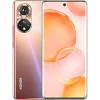
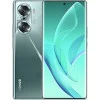
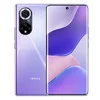
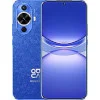
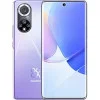

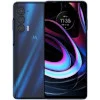

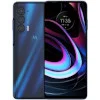
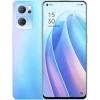
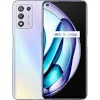

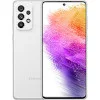
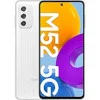

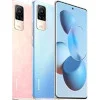
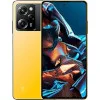
Comparison of Devices with Snapdragon 778G
Compared to Other SoC
Share in social media
Or Link To Us
<a href="https://cputronic.com/en/soc/qualcomm-snapdragon-778g" target="_blank">Qualcomm Snapdragon 778G</a>